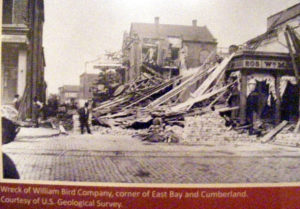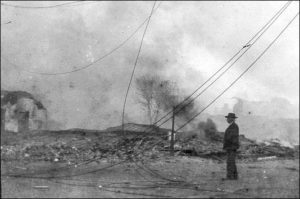
Scene From an 1886 Issue of Harper’s Weekly Depicting Charleston’s Massive Earthquake
We know today that traumatic events can create mental health issues, and encourage victims to seek help after disasters of all kinds. Even a hundred years ago, medical professionals recognized that people could experience profound reactions to disaster–they just couldn’t offer preventative assistance.
In August, 1866, a massive earthquake centered around Charleston, South Carolina created havoc from Maine to Florida. Of course, people were physically hurt as a result, but many also experienced what we would now term post-traumatic stress disorder. At least three women seem to have literally died of it–the newspapers reported they were “frightened to death”–and others suffered nervous conditions that required sedation. They consumed medicines containing morphine, laudanum, valerian, and/or alcohol for relief, or simply went straight to bars for comfort.

Destruction in South Carolina
The Savannah Morning News reported that at least a dozen people went insane and had to be sent to lunatic asylums, though it didn’t mention whether or not the stays were short or long-term. Continued aftershocks kept people anxious–and presumably on medication–for several months afterward.

Photograph Taken After the 1906 Earthquake, courtesy Sonoma County Library
Similar cases of “earthquake madness” have been reported elsewhere. The 1906 Santa Rosa (California) earthquake also left a number of victims insane. Mrs. L. W. Stebbins died in 1907: “Her awful experiences in those April days racked and wrecked her mind and body, ” reported the Press Democrat. “Her reason failed, and she was taken to the state hospital for treatment, but steadily declined in health…” At least six others from Sonoma County went into an asylum and three died there. Jacob H. Schlotterback of Santa Rosa was one of them, and his cause of death was listed as: “earthquake of April 18, 1906.”